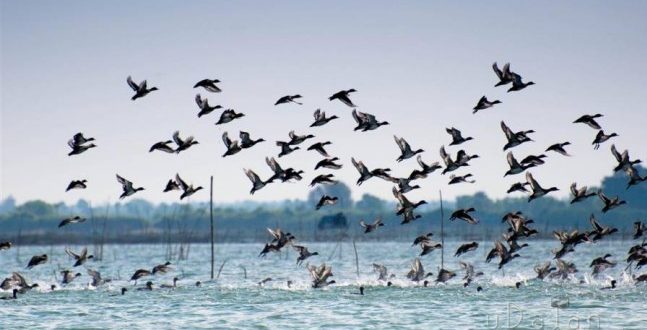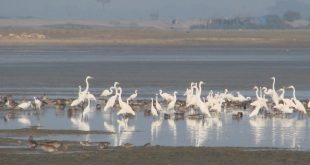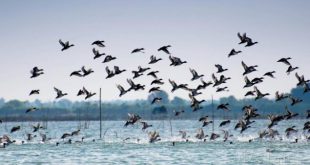Bhubaneswar: Chilika, Asia’s largest brackish water lagoon, has received about 10.5 to 10.7 lakh birds this winter, said the annual monitoring report of Chilika Development Authority (CDA) on Friday.
“The total bird population of Chilika lagoon will be in the range of 10.5 lakhs to 10.7 lakhs. This compares favorably with the population of last year”, said the CDA report.
However, the exact number along with different species will be available after the detailed census planned by Chilika Wildlife Division in the near future.
The annual monitoring of Chilika lagoon to know the status of flora and fauna and also to estimate the population range of birds, in particular, was taken-up by Chilika Development Authority (CDA).
The CDA with the help of 175 personnel in 29 teams comprising the officials of Chilika Wildlife Division, members of different boat associations and NGOs besides the WWF-India and BNHS representatives conducted the annual monitoring of Chilika lagoon on January 3, 2020.
The purpose was to know the status of flora and fauna and also to estimate the population range of birds in particular.
Highlights of the annual bird survey report at Chilika:
- The total bird population of Chilika lagoon will be in the range of 10.5 lakhs to 10.7 lakhs. This compare favorably with the population of last year. The exact number along with different species will be provided by the Wildlife wing, after detailed census being planned by Chilika Wildlife Division in the near future.
- Nalabana water bird sanctuary notified during 1987, spread over 15.53 sq. km has one of the largest congregation with 3,74,752 birds of 114 species. 74 are waterfowls and 40 are waders. Most of these water fowls breed outside the sub-continent in the palearctic region and migrates to Chilika lagoon during the winter for roosting and feeding.
- The evicted areas from the net gharries, to the tune of 162 sq.kms is not reconstructed and remains free. These areas have become the new place of congregation for the birds and the dolphin population. Areas like Gurubai and Parikuda etc have become Important Bird Areas (IBA) with presence of large number of migratory ducks and geese.
- Dolphins are colonizing new areas, free from encroachments. Few families have migrated from Outer channel to Central and Southern sector. Their exact area of colonization has been monitored and mapped with the help of hydrophones. The direct sighting of dolphins by the survey team was difficult at many places due to inclement weather and its exact range of population will be estimated at a future date.
- The population of waders were observed to be less compared to previous years, as they are dependent on mudflats which are dynamic in nature and was affected by the storm surge during the cyclone ‘FANI’. It will recover in due course of time and will be suitable for the waders to feed on.
 Update Odisha-Odisha News I Latest News Get latest news on Odisha, Govt. Jobs, OSSC, OPSC, Entertainment, Crime, Sports, and Education
Update Odisha-Odisha News I Latest News Get latest news on Odisha, Govt. Jobs, OSSC, OPSC, Entertainment, Crime, Sports, and Education



